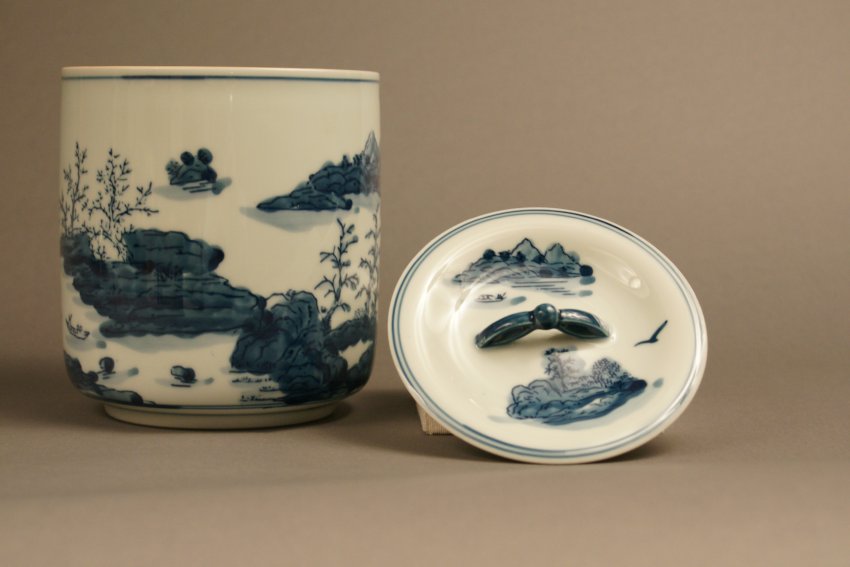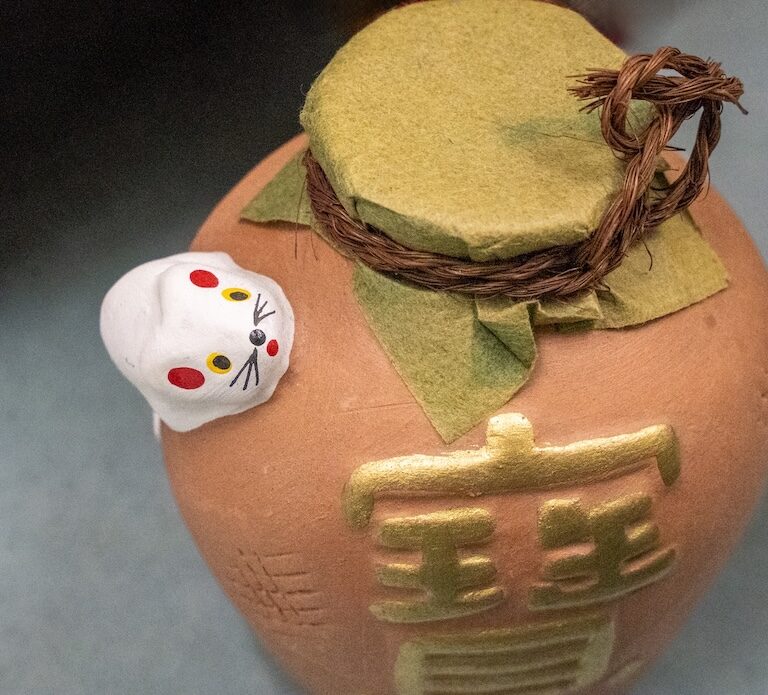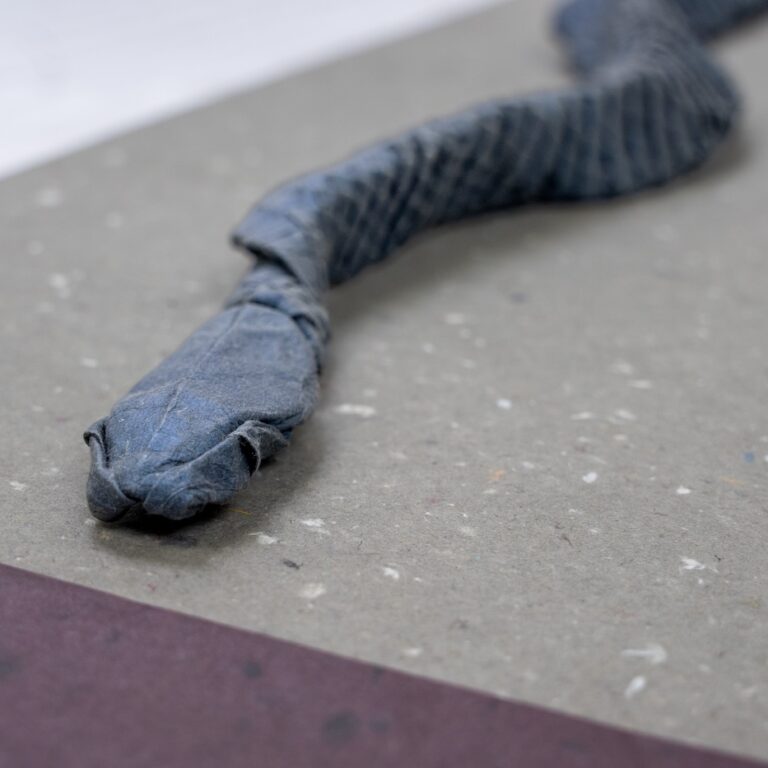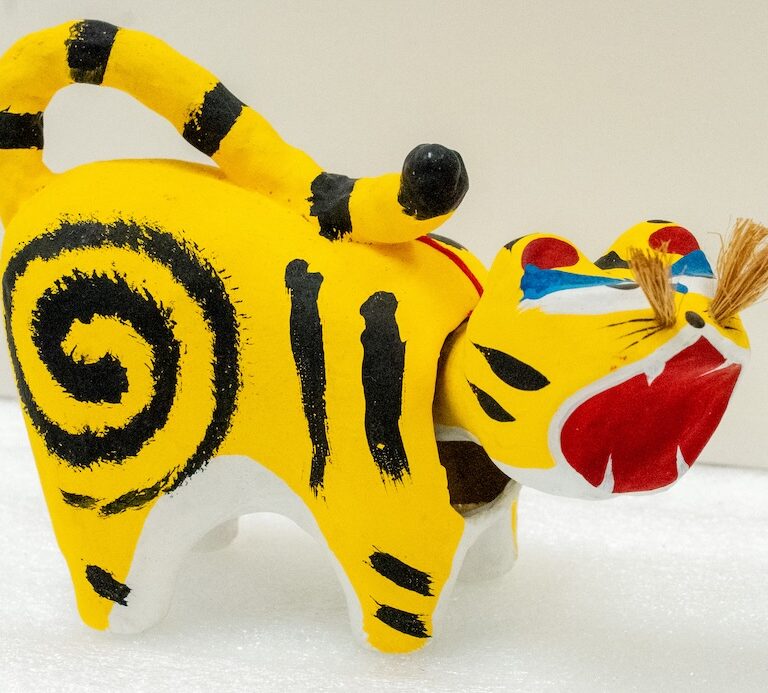LIGHT AS AIR: The Buoyant Sculptures of Mariko Kusumoto
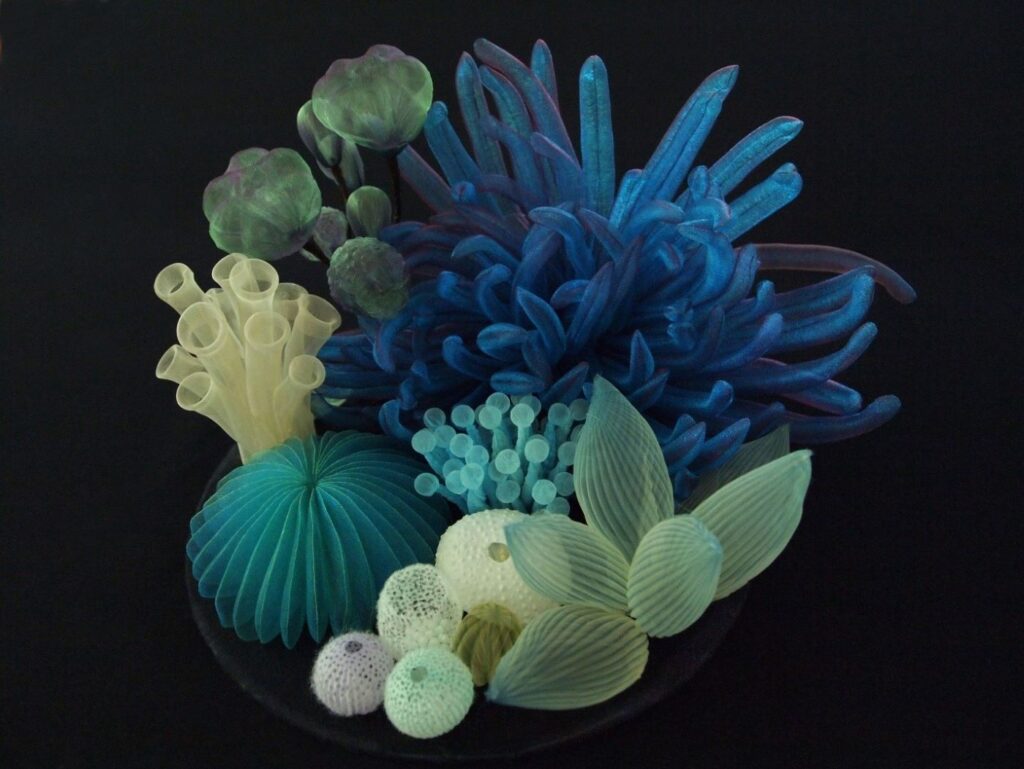
Member Preview Day: Friday, November 7, 2025
On view to the public Saturday, November 8, 2025- Sunday, April 5, 2026
The Morikami Museum and Japanese Gardens invites you to Light as Air: The Buoyant Sculptures of Mariko Kusumoto, a special exhibition celebrating the sustained devotion to traditional craft as interpreted by the innovative contemporary artist, Mariko Kusumoto. The daughter of a Buddhist priest, Kusumoto grew up in a 400-year old temple in Japan. The beauty of the landscape and the textures of the aging temple always intrigued the emerging artist. She studied painting and printmaking at Musashino Art College in Tokyo and at the Academy of Art University in San Francisco. After several years of working in metal sculpture, Kusumoto began to experiment with tsumami zaiku, the ancient art of folding and pinching fabric. Mariko Kusumoto’s fiber creations are inspired by a range of phenomena, from organic to man-made. Many of the diaphanous forms seem to be floating in water, eliciting images of a lush aquatic garden. In Light as Air, Kusumoto will expand the scale of her transparent sculptural forms to create a unique, on-site installation that will meander and float into all dimensions of the gallery space.
Take Akari: Bamboo Lights
Experience the world of illuminated bamboo at the Morikami
On view November 8, 2025 through April 5, 2026
Featured Artist: Akihiro Mashimo, Bamboo Craftsman (accompanied by two assistant bamboo craftsman)
Experience the world of illuminated bamboo by bamboo craftsman and artisan Akihiro Mashimo. In Japan, Take Akari or Bamboo Light festivals and events are popular in various regions of modern Japan. This movement began over three decades ago and has become a new cultural phenomenon. The bamboo light installations were started with the intention of enlightening people about the critical need for maintaining bamboo forests and educating the community about this important natural resource used in their daily lives. Take Akari: Bamboo Lights is a unique immersive experience for visitors to taste a small part of Japan’s festivities at the Morikami.
Organized by the Morikami Museum and Japanese Gardens. Funded in part by The Jacarlene Foundation, JM Family Enterprises, Inc., and Nobu Hotel Miami Beach.
Blue & White
from the Morikami Museum Collection
On view through April 5, 2026
The phrase ‘blue and white’ is synonymous with porcelain that originated in China during the 7th and 8th centuries. The distinctive deep blue color comes from adding the mineral cobalt. The stark contrast of white base with intricate blue designs quickly became popular and spread throughout Asia.
Cobalt is a mineral and an expensive material yet it very consistently holds its color in the kiln, making it a favorite medium among Japanese potters. There are two kinds of cobalt. Cobalt oxide is preferred for its intensity and because it requires less material to create bold color. The other is cobalt carbonate, which is favored for its finer grain, and therefore produces a more even spread. Cobalt is also used industrially because of its strength, magnetic properties and by acting as a catalyst for chemical reactions.
The technique used for the ceramic works is called ‘underglaze cobalt blue.’ The detailed compositions are painted on the body of the plain vessel, sometimes utilizing a stamp or stencil. After being bisque fired in a kiln, a clear coat of glaze is applied on top and the piece is fired a second time. This creates a smooth, lustrous and durable surface.
Most people are familiar with indigo because it is the color that originally made blue jeans blue. It’s a botanic dye that has been used throughout the world by many different countries and cultures. Some of the oldest examples – more than 6,000 years old – were found in Peru. China, Korea and Japan have also produced material with this dye on an industrial scale.
Indigo is derived from the leaves of plants in the genus Indigofera of the pea family. In addition to being a good colorant, these shrubs have many medicinal properties. They grow throughout tropical and subtropical regions. The leaves are soaked in water and fermented for several days. A base, such as calcium hydroxide, is added to make the solution less acidic. This solution, which is yellow at first, turns to deep blue when exposed to air.
The most common technique that is used for creating designs on fabric is called ‘paste resist dying.’ The paste, which is usually made from rice flour, prevents the fabric from absorbing the dye where the paste is applied. Designs can be hand drawn or applied with stencils to produce complex and detailed patterns.
Zodiac Animals
Open to the Public Friday, September 19, 2025 – Sunday, January 25, 2026
A wild menagerie of animals, both mythical and real, will soon make their temporary home in the Kohnken Gallery of the Morikami Museum and Japanese Garden. Visitors can take delight in the many whimsical designs and playful renditions of the 12 animals that make up the zodiac. Each animal will be represented through different materials and methods like origami, toys, prints, votives, statuary, carvings, and papier-mâché. Based on the annual Chinese calendar rather than a Western monthly one, the animal zodiac (jūnishi-十二支) is a cyclical event where a single animal imbued with specific traits and characteristics represents those born within that year. The zodiac animal is also assigned one of five elements as well (water, fire, earth, metal or water). That animal, along with all its symbolic imagery, returns every 12 years, but with the next element in line. Thus, it takes a total of 60 years to return to the original animal and element a person was born under, making their 60th birthday an auspicious one (kanreki-還暦). Tour the exhibit from September 19th to November 30th and see what the zodiac animals have to say about you.
Japanese Roof Tiles
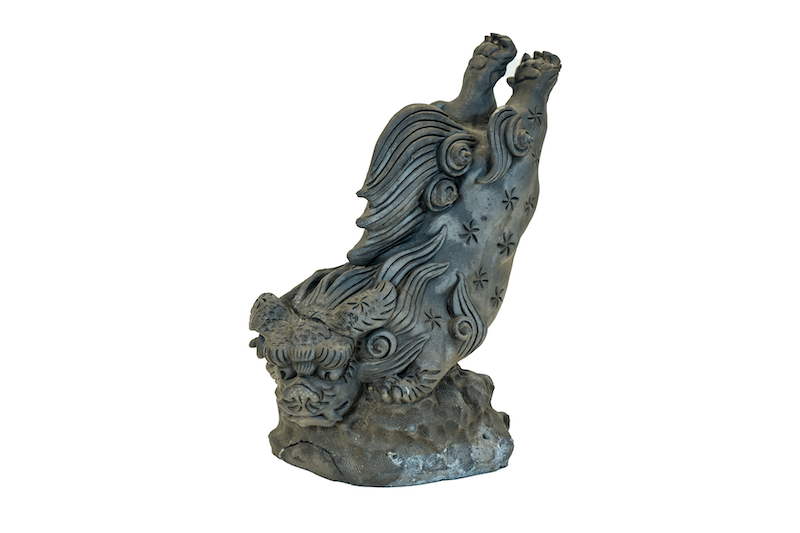
Monday June 16, 2025 – Sunday, November 30, 2025
Visitors to the Yamato-kan have the opportunity to see and learn about Japanese roof tiles from the Morikami Museum Collection. Japanese roof tiles (kawara-瓦) originated in China, and their use in Japan can be traced back to the 7th century. Buddhist temples used these clay tiles exclusively until the Nara period (mid to late 8th century). Slowly, other buildings began to use kawara due to their fire-resistant nature and ability to keep out the rain and snow. During the Edo period (1603-1868), their popularity spread, leading to many creative designs and uses. To date, there are over 1,000 varieties of kawara in use. The tiles are made from clay using molds to form their shapes, and then left to dry. The clay is then polished to help bring out their unique shine and luster. After they are fired in a kiln, carbon particles attach themselves to the clay, giving them their characteristic smoky grey color. Japanese folklore and motifs abound in the designs of the pieces, each offering a wish for protection, good fortune, or to ward off demons and bad spirits.

